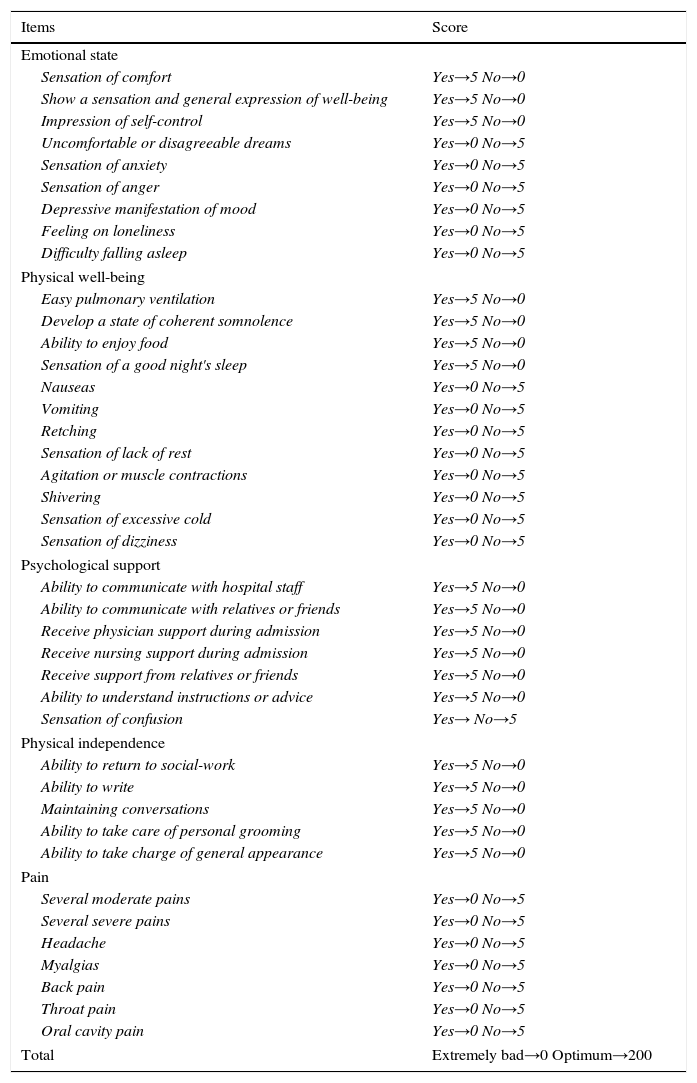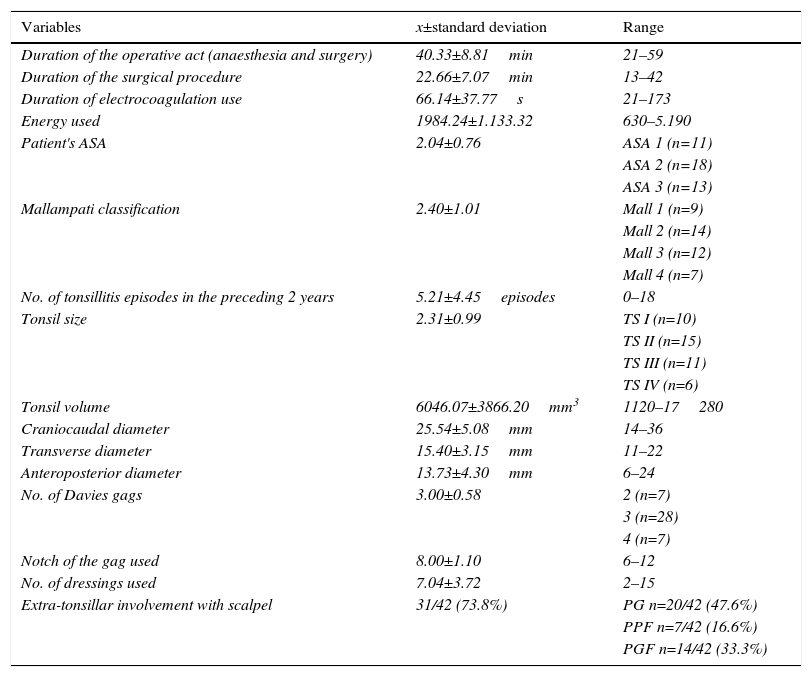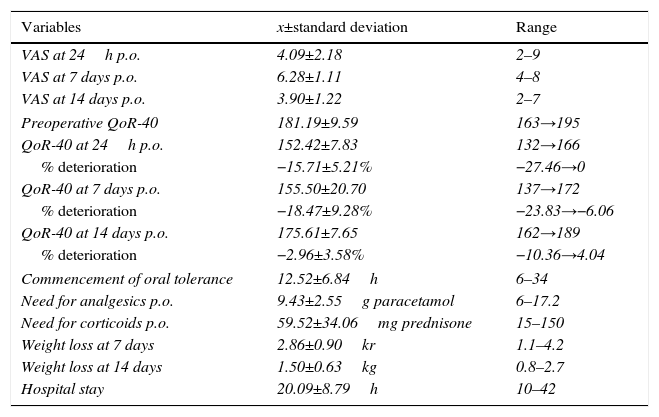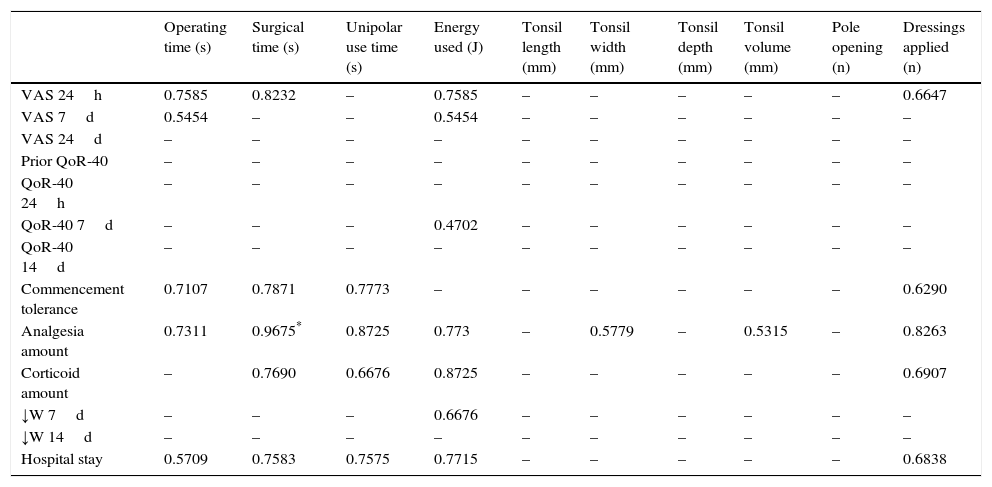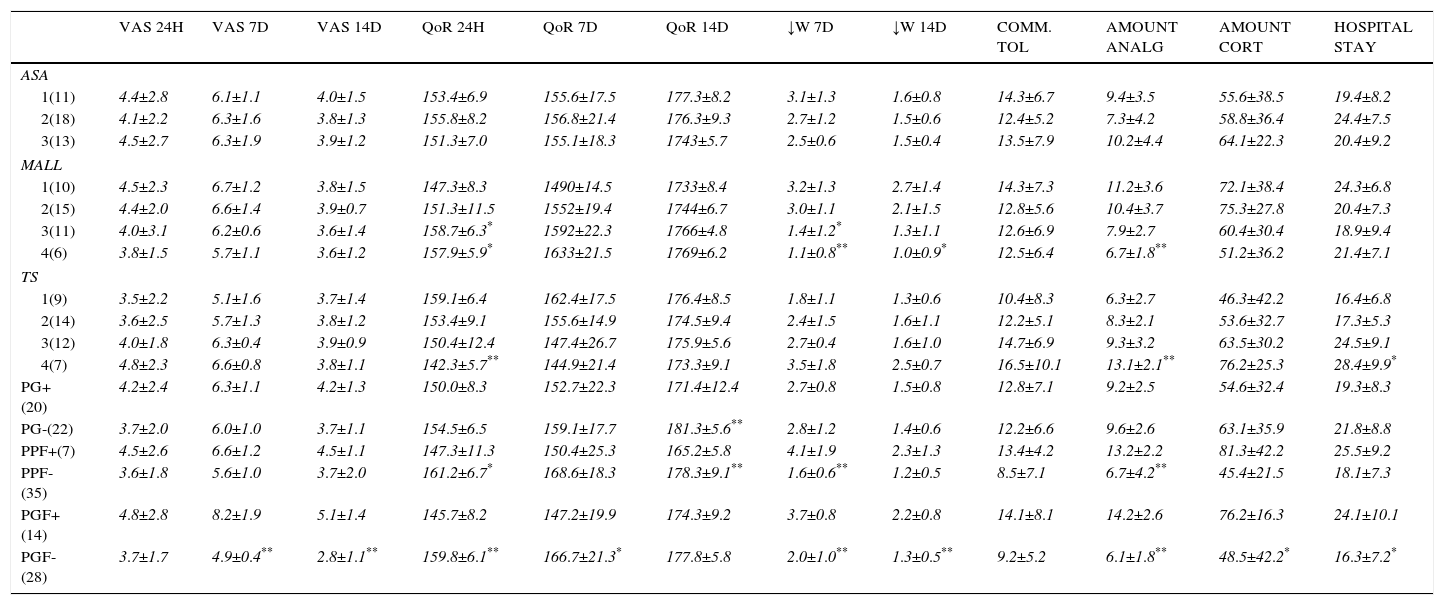Assessment of factors related to pharyngeal anatomy and surgical technique as possible causes of post-tonsillectomy pain.
Materials and methodsThis was a prospective observational study that included 42 patients undergoing tonsillectomy with cold and monopolar electric device dissection. We recorded duration of the entire operation, duration of electrocautery use, tonsil size and postoperative pain and discomfort assessed using a visual analogue scale (VS) and a 40-item questionnaire (QoR-40, Quality of Recovery), along with sequelae on returning to normal diet, weight loss and hospital stay. Correlations among quantitative variables were obtained by mean of lineal regression coefficients.
ResultsDuration of surgery was 22.66±7.07min, removing tonsils with a volume of 6046.07±3866.20mm3 and an electrocautery use time of 66.14±37.77s, applying 1984.24±1133.32 joules per patient. The most frequently observed Mallampati classification and tonsil size scores were stages II and III. The VS score increased and QoR-40 decreased at 24h and 7 days, but differences were statistically non-significant. Joule amount used for electrocautery was the parameter that correlated the best with discomfort status as measured via assessment scores, analgesic and corticosteroid requirements, weight loss and hospital stay. Pain was higher in subjects submitted to peritonsillar surgical aggression.
ConclusionsImproved use of electrodissection techniques, limiting and focusing the application of its energy, and preservation of peritonsillar mucosa are factors that may lower post-tonsillectomy pain levels.
Valoración de factores relativos a la anatomía faríngea y a la técnica quirúrgica como posible causa de dolor postamigdalectomía.
Material y métodosEstudio longitudinal prospectivo sobre 42 pacientes amigdalectomizados mediante disección con bisturí frío y monopolar, cuantificando los tiempos quirúrgicos y de empleo de electrobisturí, tamaño amigdalar, el dolor postoperatorio mediante escala analógica visual (EAV) y test de 40 ítems (QoR-40) y sus secuelas en la tolerancia oral, pérdida de peso y la estancia hospitalaria. Las correlaciones entre variables cuantitativas se establecieron mediante coeficientes de regresión lineal.
ResultadosLa amigdalectomía duró 22,66±7,07 minutos, retirando amígdalas con un volumen medio de 6.046,07±3.866,20mm3 y empleando electrocauterio 66,14±37,77 segundos para aplicar 1.984,24±1.133,32 julios por paciente. El Mallampatti más frecuente se estadió en los estadios 2 y 3, y el tamaño amigdalar fue mayoritariamente entre 2-3. La EAV se elevó y el índice QoR-40 descendió a las 24 horas y a los 7 días de forma estadísticamente no significativa. La cantidad de julios administrados fue la variable que mejor se correlacionó con el malestar medido en las escalas, los requerimientos de analgesia y corticoides, la pérdida de peso y la estancia hospitalaria. El dolor fue más acusado entre sujetos en los que existió manipulación quirúrgica de tejido periamigdalino.
ConclusionesLa mejoría en el empleo de las técnicas de electrodisección con aplicaciones más limitadas y focalizadas de energía y la preservación de la mucosa periamigdalar son factores que podrían aliviar el nivel de dolor postamigdalectomía.






